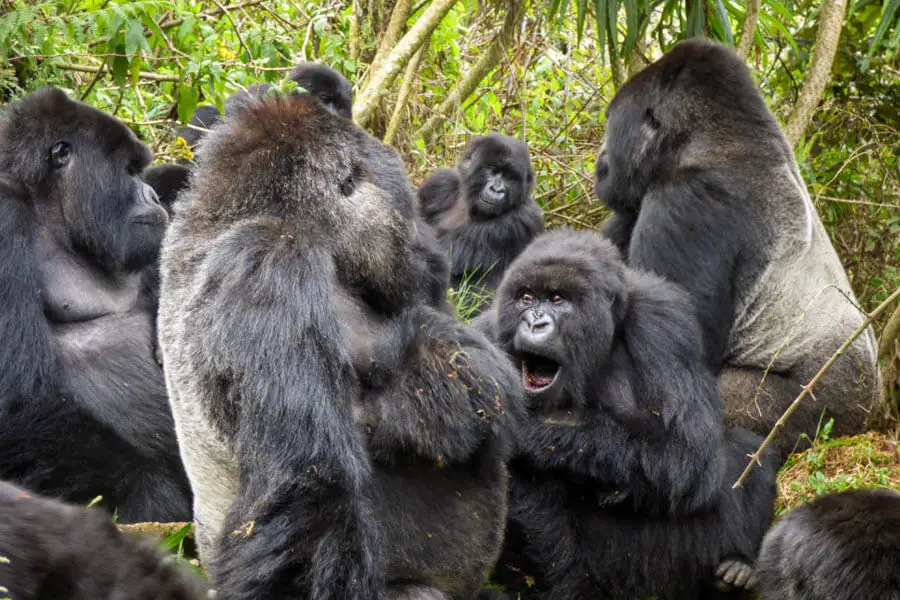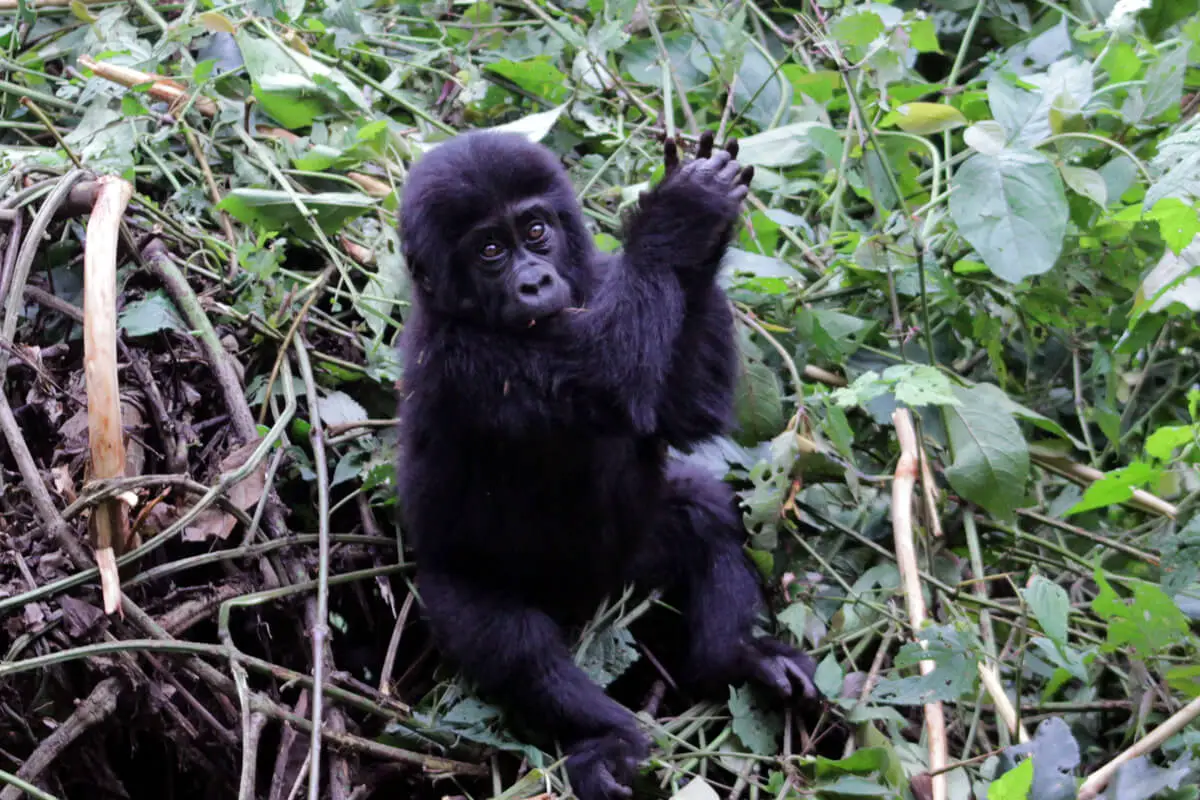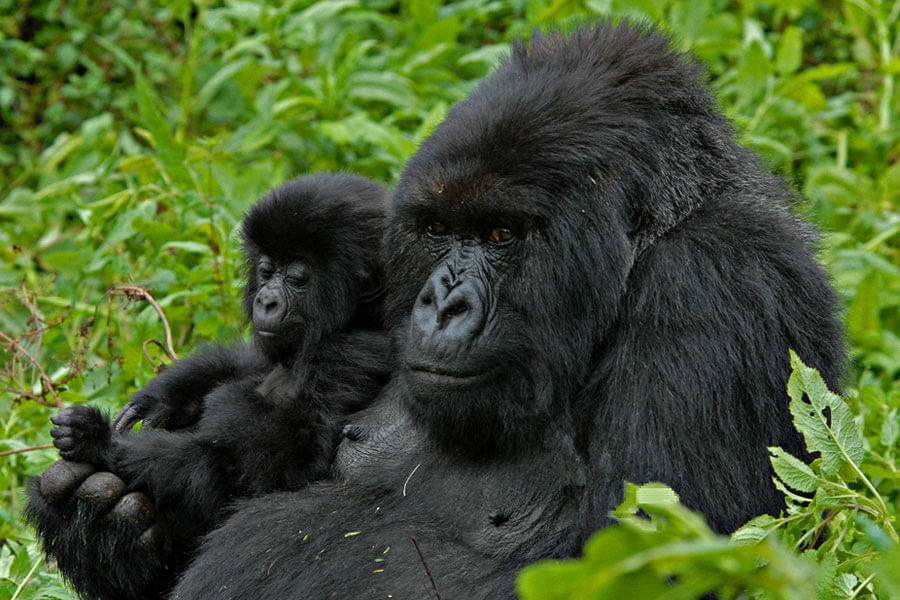Gorillas are among the most fascinating animals on Earth - not just because of their size and strength, but also due to their complex behaviours. Chest beating is one of the most iconic and intriguing behaviours that has been observed and studied in gorillas.
This incredible display has captivated researchers and wildlife enthusiasts alike, sparking numerous questions and theories.

In this article, we will look into the reasons why gorillas beat their chests, explore the significance of this behaviour, and dispel some common myths.
Understanding Gorilla Chest-Beating
Before understanding the reasons behind chest-beating, it's essential to know how gorillas perform this action.
Chest-beating involves a gorilla rapidly drumming its chest with both open hands. This behaviour is most commonly observed in male gorillas, particularly the dominant silverbacks.
The sound produced by a gorilla's chest-beating can be heard from great distances, resonating through the dense rainforests where gorillas live.
Why Gorillas Beat Their Chests
Here are some of the reasons behind the chest-beating in gorillas.
1. Communication & Social Signalling
Chest-beating is primarily a form of communication among gorillas. It serves as a way for gorillas to convey their presence, dominance, and intentions without the need for physical confrontation.
In the complex social structure of gorilla groups, chest-beating helps maintain order and reduce direct conflicts.
- Territorial Claims
Silverback gorillas, the dominant males of the gorilla family, often utilize chest-beating to assert control over their territory. This display warns other males to stay away and signals their readiness to defend their group if necessary.
- Attracting Mates
During mating season, chest-beating can also serve as a display to attract females. A powerful chest-beat can signal a male's strength and genetic fitness, making him more appealing to potential mates.

2. Establishing Dominance
In gorilla groups, hierarchy is crucial for maintaining social order. Chest-beating is a way for silverbacks to establish and reinforce their dominance within the group. This behaviour can prevent challenges from younger males, known as blackbacks, who may be vying for control.
- Intimidation
The sight and sound of a dominant silverback beating its chest can be intimidating to both rival males and other members of the group. This display helps to minimize physical confrontations, as the other gorillas will know if they can reasonably compete, or not.
According to the Max-Planck Institute, "The chest beats given by adult male gorillas reliably indicate their body size". Here is the full article.
3. Warning Signals
Chest-beating can also serve as a warning signal to potential threats. When a gorilla feels threatened by predators, other animals, or even human intruders, chest-beating can be used to scare off the perceived danger.
- Deterring Predators
Although adult gorillas have few natural predators, the sound of chest-beating can deter large predators like leopards. This is because it signals to any intruder that the gorilla is alert and ready to defend itself.
It is similar to why lions in the wild will roar to warn the animals in its vicinity.

4. Expressing Excitement or Stress
Just like us humans, gorillas have complex emotional lives. Chest-beating can sometimes be a way for gorillas to express excitement, stress, or agitation.
- Excitement
Young gorillas, in particular, may beat their chests during play or when they are excited. This behaviour can be seen as a form of self-expression and a way to release pent-up energy.
Obviously, this is also practice for the future when they are grown and needing to perform chest-beating for a purpose meant for the whole family.
- Stress Response
In stressful situations, such as encounters with humans or other unfamiliar gorillas, chest-beating can help a gorilla manage its anxiety and assert control over the situation.
This helps gorillas stay with in their territory, and not wander off, or get 'taken over'. With humans, it also communicates the need for a safe distance - and important part of gorilla tourism and research.
Myths About Gorilla Chest-beating
There are several common myths and misconceptions about chest-beating that have been perpetuated by popular culture and media. Let's look at a few, and dispel them for you.
-
Myth 1: Chest-Beating is Always Aggressive
One common misconception is that chest-beating is always an aggressive act. While chest-beating can be used to intimidate rivals or warn off threats, it is not inherently aggressive. In many cases, it serves as a form of communication that helps gorillas avoid physical confrontations.
-
Myth 2: Only Silverbacks Beat Their Chests
Another myth is that only silverback gorillas engage in chest-beating. While silverbacks are the most frequent chest-beaters due to their role as leaders and protectors of the group, younger males and even females can also beat their chests, particularly in play or as a form of expression.
-
Myth 3: Chest-Beating is Unique to Gorillas
Chest-beating is often associated solely with gorillas, but other primates, such as chimpanzees, have similar behaviours. However, the distinct sound and frequency of gorilla chest-beating make it particularly noteworthy.
Chest-Beating & Conservation
Understanding gorilla behaviours like chest-beating is crucial for conservation efforts. By learning about these behaviours, researchers can better monitor gorilla populations and implement strategies to protect them.
For instance, knowing that chest-beating can signal stress or agitation can help conservationists minimize human disturbances in gorilla habitats.

As intelligent animals, conservation and research benefits so much from understanding the gorillas' behaviours, and this complements the physical and ecosystem understanding to form a wholistic point of view that can drive conservation effort.
This knowledge is what informs conservation practices, and for those of us who want to see gorillas - all this affects the rules for gorilla trekking.
Closing Thoughts
Chest-beating is a multifaceted behaviour that plays a significant role in gorilla communication, social structure, and survival. By understanding the reasons behind chest-beating, we gain deeper insights into the lives of these incredible primates and the importance of protecting their habitats.
In as much as gorilla chest beating is a fascinating thing to watch, studying it has provided us with a lot of information that enables us a better understanding of these gentle primates.
The understanding of chest-beating has a crucial but underrated role in making gorilla tourism possible.
